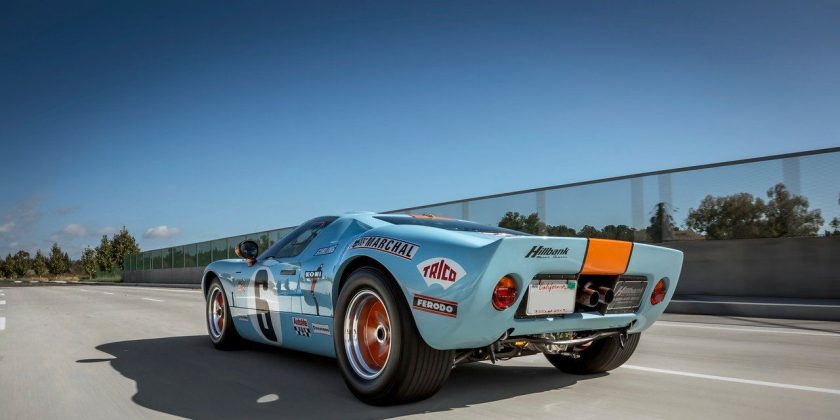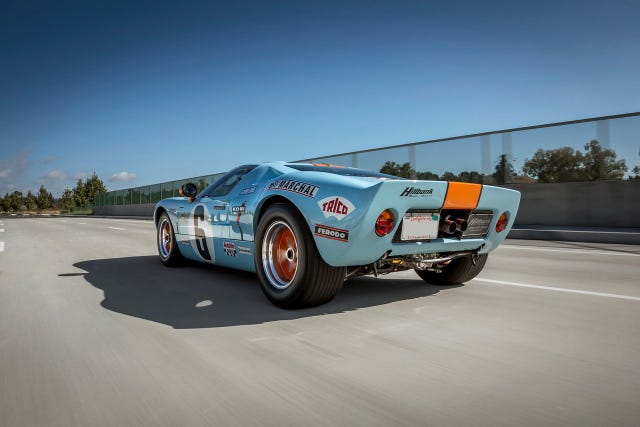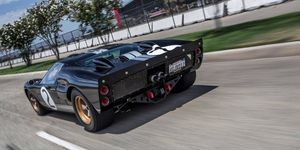“…and there was much rejoicing.”
At least there was for a while.
SEMA sent out a celebratory press release January 21 announcing that the long-awaited law to allow low-volume carmakers to build cars with complete drivetrains in them was finally ready.
“NHTSA has completed a regulation permitting low-volume motor vehicle manufacturers to begin selling replica cars that resemble vehicles produced at least 25 years ago,” SEMA said.
If you’ll recall, Congress enacted a SEMA-led bill into law way the heck back in 2015, thanks to the work of Congressman John Campbell. The law was part of the FAST Act, Fix America’s Surface Transportation Act. The act was voted into law and signed by President Obama that same year, but then sat on Secretary of Transportation Elaine Chao’s desk, or it sat somewhere in NHTSA, awaiting someone to write up specific regulations for how the law should be implemented. It waited so long that SEMA finally sued NHTSA to come up with the regs. That has happened, more or less, and now the law, which streamlines requirements for small automakers, could mean Cobras, ’32 Ford Roadsters and even DeLoreans and Allards should be available for sale with engines and transmssions in them, right on show room floors. Previously companies could make or import “rollers,” cars finished except for engines and drivetrains, the latter which the law required third parties to install. Of course that setup was idiotic. But that’s why we have laws.
“We’re really excited about this,” said Lance Stander, a major purveyor of Superformance Cobras, amazing continuation Ford GT40s, and many other very cool cars through Hillbank Motor Corporation in Irvine, Calif.
“It’s been a long time coming,” said Roger Allard, who’s company, Allard Motor Works has been making the J2X MkIII, a modern hand-crafted version of the famed British competition roadster.
“SEMA applauds NHTSA’s final rule allowing companies to market classic-themed cars,” said SEMA president and ceo Christopher J. Kersting. “Regulatory barriers have previously prevented small automakers from producing heritage cars for eager customers. The roadblocks have been eliminated. Companies will be able to hire workers, start making necessary parts and components, and produce and sell cars.”
So let’s all go party in the streets, right? Well, not just yet. According to The California Air Resources Board (CARB), responsible for clean air in California and by extension, the world, says no. The low-volume carmakers were under the assumption they could use so-called “crate motors” from GM, Ford and MOPAR in their builds. But CARB says any engine put in a “new” car, even an old-car replica, must meet today’s emission standards, which seems directly contrary to the law just passed and now fully enacted. Can CARB overrule the Federal government? And is that what it’s doing?
“NHTSA’s new rule really is all about exempting these special construction low-volume cars from safety standards, not emission standards,” said CARB spokesman Stanley Young. “It does open the door for them to legally sell whole cars as opposed to only DIY kits to build your own. CARB adopted a reg in 2018 to adopt a set of standards for engines used in these kind of vehicles.”
Young explained.
“Simplified, it allows for certification of a modern-day engine with all its emission controls, to a slightly less rigorous set of emission standards to make it more amenable to working properly across a broader range of vehicle sizes, shapes and weights.
“EPA allows for the use of an engine that is either: (a) certified to CARB’s reg noted above; or (b) is a modern-day engine with all its emission controls that was certified by an OEM in a new OEM car in the same model year as the small volume car is built (e.g., if you are building a 2021 MY small volume car, you have to use an engine and emission controls from an OEM car that was certified for 2021MY).”
But what about crate motors, man?
“Crate motors, aka modern-day or high-performance engines, without a full set (or any) emission controls, are not legal anywhere in the US or CA for use in these cars.”
The last motor carmakers had their hopes set on was the GM E-ROD V8, but that hasn’t been certified in years.
“The GM E-ROD motor, which is a hybrid of a modern-day crate motor, but with a full set of modern-day emission controls, is the kind of thing that can meet the CARB standards. But GM only certified it once, several model years back. It is currently only approved for use in existing pre-1995 light duty vehicles as a replacement. It cannot be used in any newly built car.”
So what does that mean?
“At this time, there are no engine packages available for use in replica cars,” Young said. “Manufacturers who wish to supply engines to the replica car builders will have to be certified just like other light duty manufacturers. With the promulgation of the NHTSA rule, we expect industry to submit applications for certifications.”
Sad trombone.
While manufacturers I spoke with appreciated SEMA’s efforts in finishing and implementing the law, they were disappointed that the engine problem persisted.
“I’m proud to see the Federal government actually follow through and take action, albeit years-delayed, in a manner that will enable and empower small businesses to exist and to thrive and to grow and to expand the offerings to the consumers, and by doing those first two things, accelerating technology, both in the EV space and others,” said ICON 4X4’s Jonathan Ward, who has made some very cool cars over the years including Ford Broncos and Toyota FJ40s in addition to any number of reimagined old American sedans and coupes, among many others at his Chatsworth, California shop. “However, given California’s increasingly anti-business, attitude, it’s my understanding California has yet to let the ink dry on what their standards and processes are. The last time I saw them, they were saying things like the GM E-ROD engine are not compliant in such a scenario, and they were requiring shed tests and full emission certifications, to which the timeframe is so long, the costs are extreme, and it is every year ripe for reinterpretation or resubmission. That will basically prohibit any companies proud and dumb enough to be based in California to be able to be on a level playing field or arguably, to even make a viable economic model to be able to do so.”
Surely there must be something that can be done, yes? Maybe.
Ford, which introduced its Coyote crate motor amidst much fanfare at a SEMA show only a few short years ago, gave a wonderfully non-committal answer when asked about making its Coyote crate motor available.
“At this time, Ford Performance Parts (FPP) is actively working to determine whether or not to pursue certification of its 5.0-liter Coyote Mustang crate engine for special construction low volume cars. It is a complex application that entails many additional requirements – warranty of all emissions parts, serviceability, installation parameters – so FPP is thoroughly investigating the feasibility of submitting an application for certification.”
GM’s Performance Parts team, which oversees GM’s crate-engine business, has yet to get back to me.
Does anyone know anyone at MOPAR/Stellantis?
In the aftermarket, Edelbrock and Roush are said to be working on not just an engine package but the entire engine and emissions enchilada. I left a couple of messages at Roush and never heard back, but did get through to William Philippin, crate engine product manager at Edelbrock.
“We would like to offer an entire integration package,” Philippin said. “Because to make it all legal, that’s the engine, but it’s also the catalytic converters, the evaporative emission system, everything. And all of these types of components with the original calibration that’s been already approved.
“So what I think we can offer, we’ve got a whole package with one of the OEMs, or the ability to do a whole package with one of the OEMs, because that’s sort of the way it would go. At least initially. To try to do all the emissions testing and everything else would just be astronomically expensive. So we’re working with OEMs, to put together integration packages that can work for these vehicles.”
Some low-volume manufacturers are less optimistic about such a deal ever working out.
“That’s basically a passive aggressive way of putting up enough financial and timing hurdles to, as I see it, virtually assure no one in California is going to be able to do it,” said Ward.
“The problem with that plot, and I talked to Dr. (Jamie) Meyer (SEMA board of directors) when he was still at GM about it at length, is that the differential ratioed fuel tank EVAP system design, the fuel mapping, the weight class of all the various potential clients for, say, an Edelbrock, let’s say design system are so varied, that I don’t think Edelbrock ever going to be able to pave a road to certify something. You know, let’s say I need rear dump manifolds. And that’s the only difference. And somebody else needs standard dump manifold. Guess what? Full retest, full protocol.”
Yes, Ward is disheartened.
“I kind of gave up on the potential of this actually being viable for me. I am hugely, hugely disappointed. Again… the state of California.”
SEMA still believes it can be sorted out.
“An engine is coming. Hopefully multiple engines are coming. I can’t mention any names or anything,” said SEMA’s man in Washington DC Stuart Gosswein. Gosswein has spent the last couple decades trying to get this apparently complex law and all its regulations working, so we must cut him a little slack.
In the meantime, you just need a little more patience. Yes, a little more six years after the FAST Act was signed into law.
Source: Read Full Article







